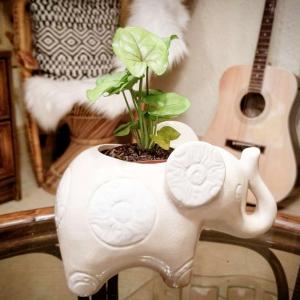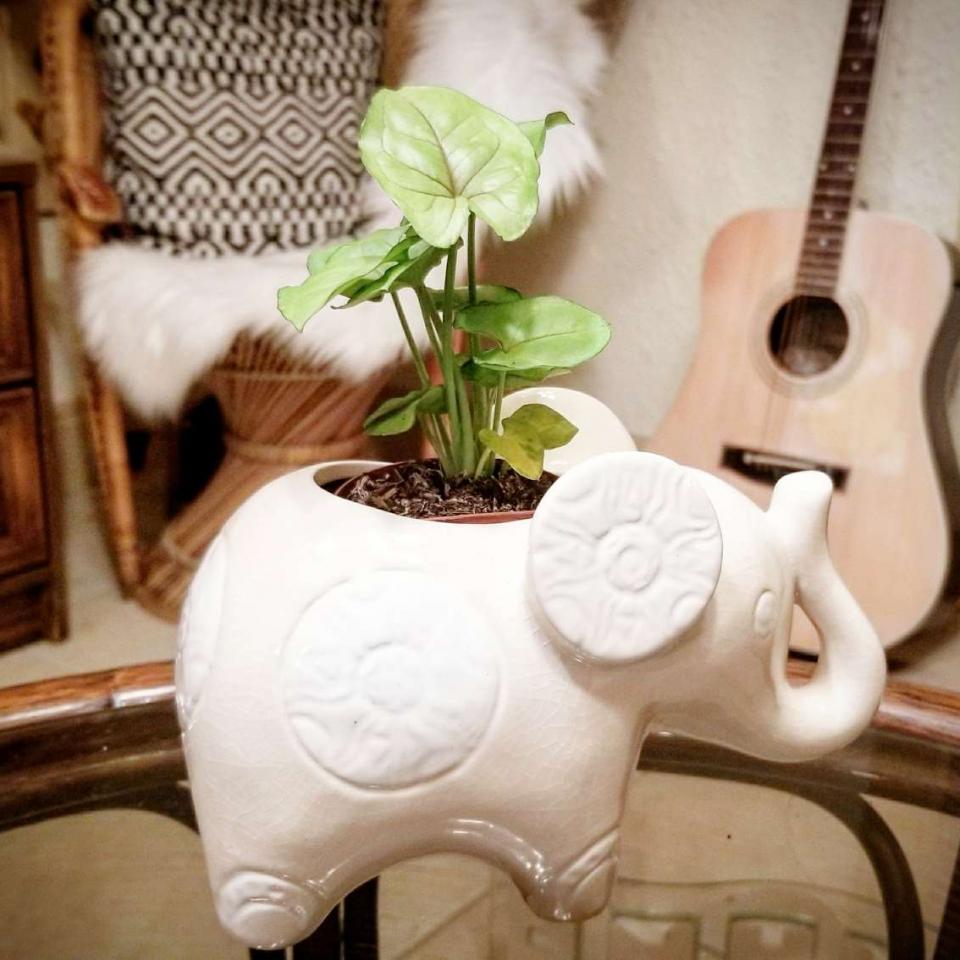Plant Experience
Detail
LIGHT
An Arrowhead Plant with green leaves can live in low to medium light. Arrowhead Plant varieties with white, pink, or burgundy leaves need medium to high light. The leaves of an Arrowhead Plant become “Bleached” and turn an ugly gray-green color when placed in the direct sun.
WATER
Water an Arrowhead Houseplant well and then allow the top 50% of the soil to dry out before watering again. An Arrowhead Plant droops when it needs water, but perks up quickly. When over- watered, an Arrowhead Plant develops root rot and may die.
FERTILIZER
Fertilize an Arrowhead Houseplant every two weeks in the spring and summer when it is actively growing with a basic liquid houseplant food at 1/2 the recommended strength. Feed an Arrowhead Plant monthly in the fall and winter.
TEMPERATURE
An Arrowhead Houseplant does well in temperatures between 60-75 degrees.
HUMIDITY
Arrowhead Plants prefer high humidity but still grow well in basic household humidity. Keep Arrowhead Houseplants, and most other indoor plants, away from hot air vents, air conditioners, and fireplaces.
PESTS
Arrowhead Houseplants are susceptible to the plant pestsscale and Mealy Bugs, but it is spider mites that do the most damage to Arrowhead plants. spider mites are plant pests that suck the color from the leaves and make a houseplant look pale and anemic.
DISEASES
Bacterial Root Rot due to over-watering and Bacterial Leaf Spot due to high humidity are the main Arrowhead Plant diseases.
SOIL
Arrowhead plants like a rich organic soil that drains well. An African Violet mix is a good choice.
PRUNING
Cut back the trailing vines to keep an Arrowhead Plant a bushy table or floor houseplant. When using an Arrowhead Plant as a hanging houseplant, trim off all but 5 or 6 of the long runners so the middle of the plant stays full. Use gloves when pruning an Arrowhead plant to protect your skin from the irritating sap.
PROPAGATION
An Arrowhead plant is propagated by stem cuttings and plant division.
An Arrowhead Plant with green leaves can live in low to medium light. Arrowhead Plant varieties with white, pink, or burgundy leaves need medium to high light. The leaves of an Arrowhead Plant become “Bleached” and turn an ugly gray-green color when placed in the direct sun.
WATER
Water an Arrowhead Houseplant well and then allow the top 50% of the soil to dry out before watering again. An Arrowhead Plant droops when it needs water, but perks up quickly. When over- watered, an Arrowhead Plant develops root rot and may die.
FERTILIZER
Fertilize an Arrowhead Houseplant every two weeks in the spring and summer when it is actively growing with a basic liquid houseplant food at 1/2 the recommended strength. Feed an Arrowhead Plant monthly in the fall and winter.
TEMPERATURE
An Arrowhead Houseplant does well in temperatures between 60-75 degrees.
HUMIDITY
Arrowhead Plants prefer high humidity but still grow well in basic household humidity. Keep Arrowhead Houseplants, and most other indoor plants, away from hot air vents, air conditioners, and fireplaces.
PESTS
Arrowhead Houseplants are susceptible to the plant pestsscale and Mealy Bugs, but it is spider mites that do the most damage to Arrowhead plants. spider mites are plant pests that suck the color from the leaves and make a houseplant look pale and anemic.
DISEASES
Bacterial Root Rot due to over-watering and Bacterial Leaf Spot due to high humidity are the main Arrowhead Plant diseases.
SOIL
Arrowhead plants like a rich organic soil that drains well. An African Violet mix is a good choice.
PRUNING
Cut back the trailing vines to keep an Arrowhead Plant a bushy table or floor houseplant. When using an Arrowhead Plant as a hanging houseplant, trim off all but 5 or 6 of the long runners so the middle of the plant stays full. Use gloves when pruning an Arrowhead plant to protect your skin from the irritating sap.
PROPAGATION
An Arrowhead plant is propagated by stem cuttings and plant division.
Album (1)

brielle
2017-10-31

This is my first growing diary.


Elite Article













